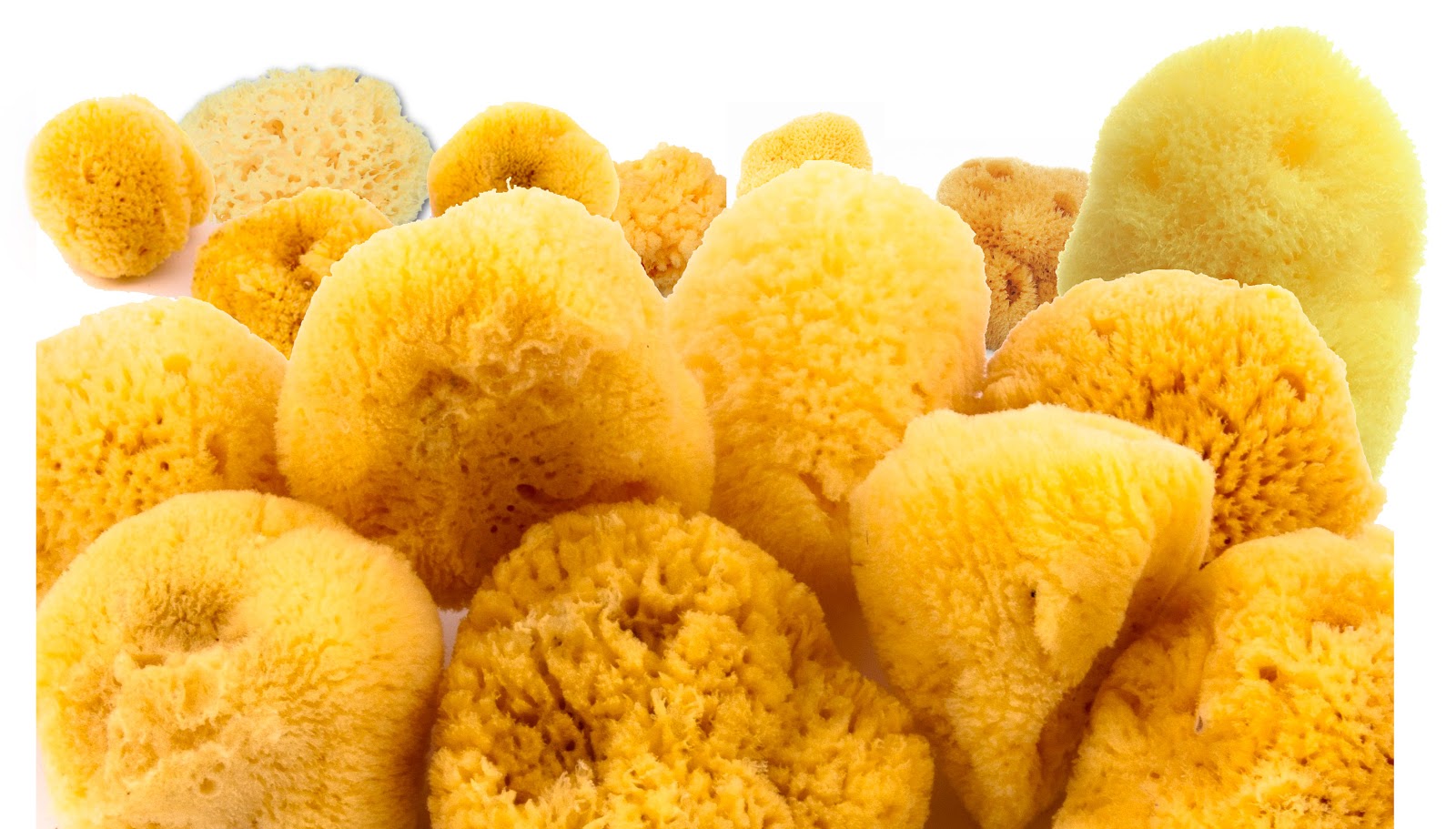A natural sea sponge naturally has a brownish colour, but with the extra process, it comes out a golden yellow. A bleached natural sea sponge is a sponge that has went through an extra process that uses a peroxide solution to bleach the sponge in a golden yellow colour. Unbleached sponges have not been treated chemically, they retain their natural colour longer and offers a great solution for people with sensitive skin.
Welcome to the world of Natural Sponges
Nothing beats the luxury of a natural sea sponge!

Posts
Tuesday 29 December 2015
Thursday 24 December 2015
How to take care of your Natural Sea sponge
Before using the sponge for the first time, soak the sponge until it has absorbed water and it has softened, then gently squeeze the sponge to remove any grains of sand of coral. Your sponge is now ready to use.
Always allow the sponge to soften in water before using it. Always squeeze the sponge gently.
Rinse the sponge after use in fresh water.
Gently squeeze the sponge. Avoid wringing the sponge.
Let the sponge dry completely after each use.
Turn the sponge over when it is partly dry, so that the bottom of it can dry completely as well.
It is advisable to wash natural sponges regularly to deter soap build-up.
Follow the cleaning advice here regularly to remove soap build-up.
Always allow the sponge to soften in water before using it. Always squeeze the sponge gently.
Rinse the sponge after use in fresh water.
Gently squeeze the sponge. Avoid wringing the sponge.
Let the sponge dry completely after each use.
Turn the sponge over when it is partly dry, so that the bottom of it can dry completely as well.
It is advisable to wash natural sponges regularly to deter soap build-up.
Follow the cleaning advice here regularly to remove soap build-up.
- Rinse the natural sponge under a cold running water.
- Soak the sponge in a small bowl for an hour every few weeks in a solution of 1 part warm water to 2 part diluted baking soda or vinegar. Leave to soak for 2 hours.
- Remove from the bowl and shake gently to remove excess liquid.
- Set out to dry on a clean surface, such as the bathtub.
- Use again. The sea sponge should be as good as new.
 |
Saturday 19 December 2015
Uses and applications of the natural sea sponges
Natural Sea Sponges can be used for a multitude of purposes:
- Application and removal of make up and cosmetics,
- Deep cleansing and general skin care,
- Massaging to stimulate the circulatory system and revitalize the skin,
- Baby bathing and skin care,
- Skin hygiene and care for teenagers,
- For a luxurious bath and shower experience,
- For Pet hygiene, horse ‘brushing’,
- premium car washing
- Decoration for ponds and aquariums,
- Professional use in painting, pottery, ceramics, etc.
- Wall painting
- household cleaning
Wednesday 16 December 2015
What is a Natural Sea Sponge?
A natural sea sponge is the simplest form of multi-cellular animal. It is the second lowest life form on earth next to the amoeba. Are classified as animals because thy grow by consuming organic materials instead photosynthesis.
Sponges belong to the class of Phylum Porifera which denotes that their ’body’ is covered by numerous pores. These multi-numbered pores are very important for the life of the sponge and they must be kept freely open for them to ’breath’ properly. This is why the sea sponges are very vulnerable to sea oil pollution when their surface is covered with a fine film of oil, the pores get blocked and the sponge can’t ’breath’.
Sea sponges are of course of the simplest form of multi-cellular animals. They live in deep seas attaching themselves to the sea bottom and in locations rich of food for them Sponges found in the Mediterranean Greek Sea are considered of the best quality, followed by the Red Sea sponges and the West Indian sponges. Sponges of lower quality can be found throughout the world’s seas and also in freshwaters.
The natural soft bath sponge, is actually the skeleton of these living sponges.
Sponges found in the Mediterannean Sea are considered of the best quality, followed by the Red Sea sponges and the West Indian sponges. Sponges of lower quality can be found throughout the world’s seas and also in freshwaters.
Sponges belong to the class of Phylum Porifera which denotes that their ’body’ is covered by numerous pores. These multi-numbered pores are very important for the life of the sponge and they must be kept freely open for them to ’breath’ properly. This is why the sea sponges are very vulnerable to sea oil pollution when their surface is covered with a fine film of oil, the pores get blocked and the sponge can’t ’breath’.
Sea sponges are of course of the simplest form of multi-cellular animals. They live in deep seas attaching themselves to the sea bottom and in locations rich of food for them Sponges found in the Mediterranean Greek Sea are considered of the best quality, followed by the Red Sea sponges and the West Indian sponges. Sponges of lower quality can be found throughout the world’s seas and also in freshwaters.
The natural soft bath sponge, is actually the skeleton of these living sponges.
Sponges found in the Mediterannean Sea are considered of the best quality, followed by the Red Sea sponges and the West Indian sponges. Sponges of lower quality can be found throughout the world’s seas and also in freshwaters.


















